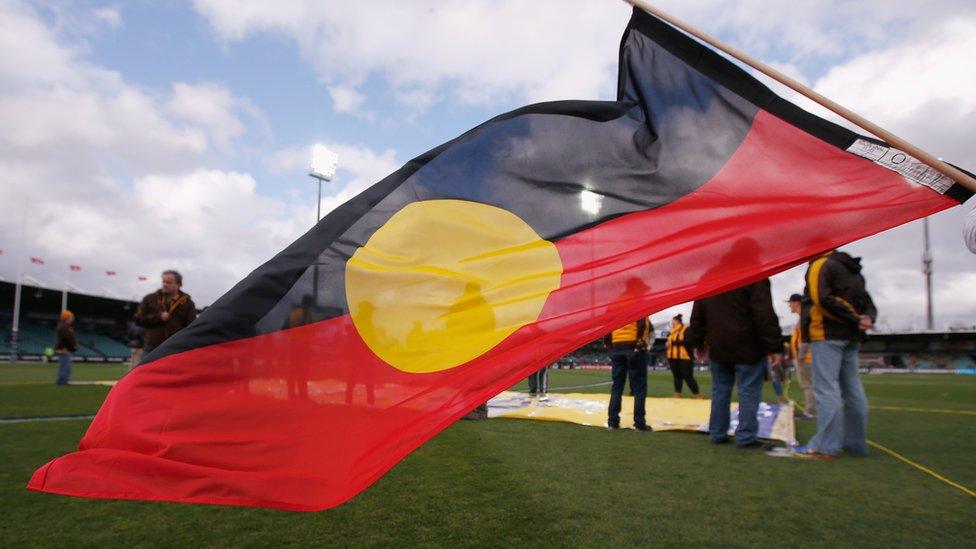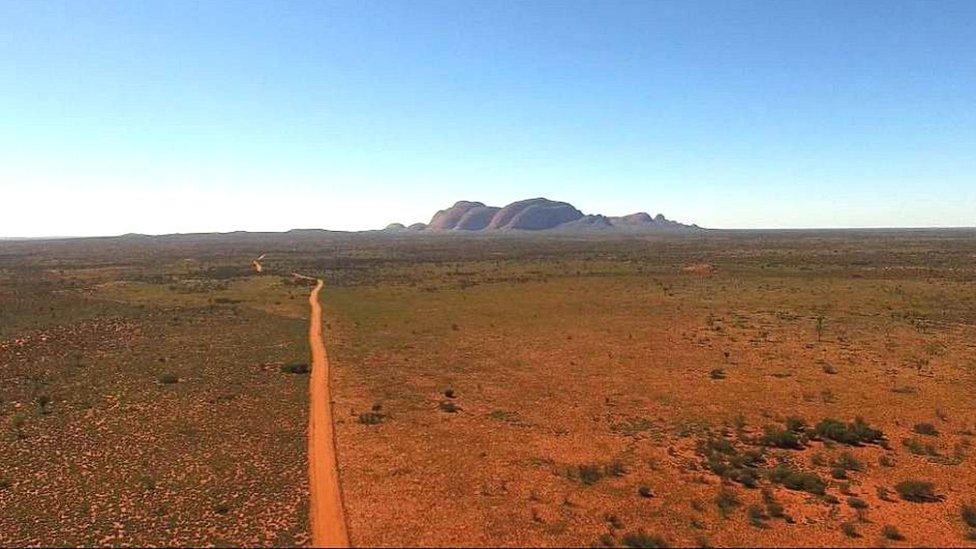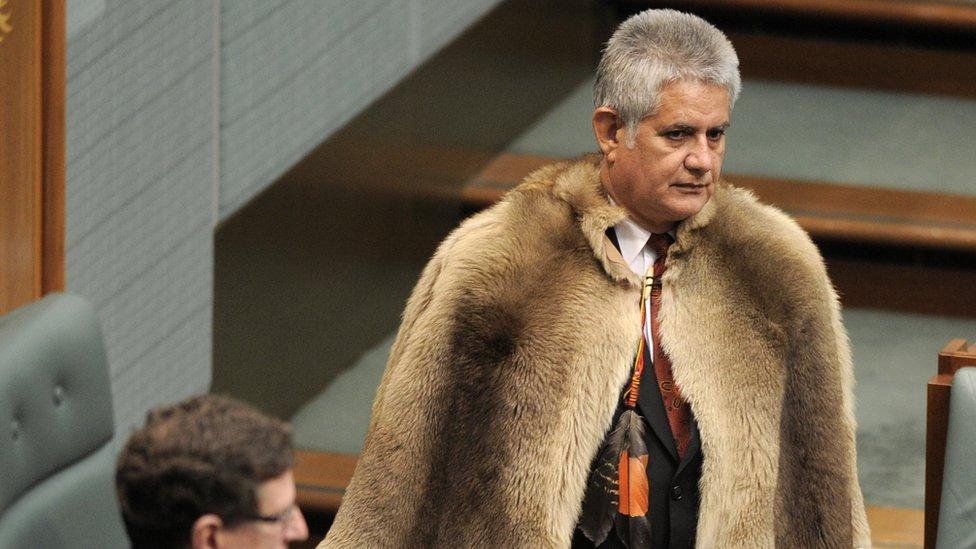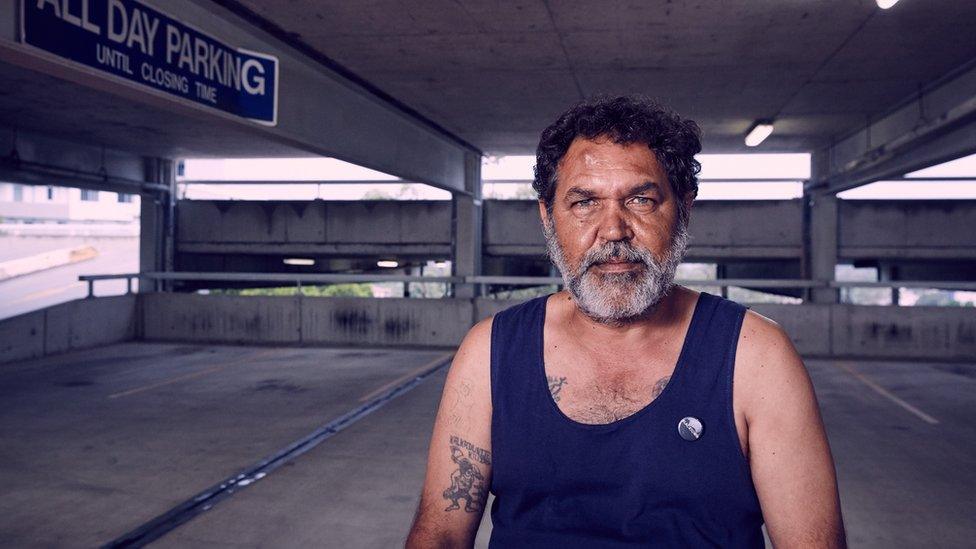Australia is failing to improve indigenous lives, report shows
- Published

Aboriginal and Torres Strait Islander Australians make up about 3% of the nation's population
Australia is not on track to close the gap in life expectancy between its indigenous and non-indigenous people, a major report card has found.
The annual Closing The Gap report, external determined Australia is failing six of seven key measures aimed at reducing indigenous disadvantage.
PM Malcolm Turnbull told parliament that progress had not been sufficient.
The annual report measures targets designed to improve health, education and employment outcomes.
"Even with successive Commonwealth and state governments investing more resources, and even with tens of thousands of dedicated Australians seeking to contribute and engage, we are still not making enough progress," Mr Turnbull said in parliament on Tuesday.
Aboriginal and Torres Strait Islander Australians, who make up about 3% of the population, are among the nation's most disadvantaged.
Apart from lifting high school completion rates, all other targets including child mortality, education and employment were not on track, the report said.
Mr Turnbull said his government was investing another A$50m (£31m; $38m) to improve the research and evaluation of policies being rolled out to try to close the gap.
What are the targets?

Close the life expectancy gap by 2031
Progress: Indigenous Australians continue to have a life expectancy of about 10 years less than non-indigenous Australians.
Currently, indigenous men can expect to live to 69.1 years (compared with 79.7) and women to 73.7 (compared with 83.1).
The 2031 target is not expected to be met. Recent declines in smoking rates should have a positive effect, but this will be offset by a rise in deaths from cancer, the report said.

Halve the gap in child mortality by 2018
Progress: Although indigenous child mortality declined by 33% between 1998 and 2015, there has been no significant decrease since 2008.
In fact, child mortality rates increased slightly from 2014 to 2015. It was at 165 per 100,000 from 2011-2015, more than double that of the rest of the population.
Mr Turnbull said he was "very saddened and disappointed" by the lack of progress.

Halve the gap in employment outcomes by 2018
Progress: Employment rates for indigenous Australians have gone backwards since 2008. In 2014-15, 48.4% of Indigenous Australians were employed compared with 72.6% for non-indigenous people.
The outcomes were worse for indigenous women and people in remote communities, where only 35.1% were employed.

Enrol 95% of four-year-old children in early education by 2025
Progress: This measure is also not on track. The report said 87% of indigenous children were receiving early childhood education in 2015, compared with 98% for non-indigenous children.
The news was better in South Australia, Western Australia and the Australian Capital Territory, where the rate was 100%.
Fresh data would be available in 2018, the report said.

Halve the gap in literacy and numeracy by 2018
Progress: Of eight measures within this target, only one - numeracy among Year 9 students - is on track.
But the data also showed significant improvements in Year 3 and 5 reading, and Year 5 numeracy.

Halve the gap in students graduating high school by 2020
Progress: This was the only measure that is expected to be met.
The report said the number of indigenous people who had graduated the final year of school increased from 45.4% in 2008 to 61.5% in 2014-15.
The increase was well above non-indigenous levels.

Close the gap in school attendance by the end of 2018
Progress: The number of school attendees has not improved since 2014, at 83.4% compared with 93.1% for non-indigenous students.
At this rate the target would not be achieved, the report said.
- Published9 February 2017

- Published18 January 2017

- Published16 January 2017
